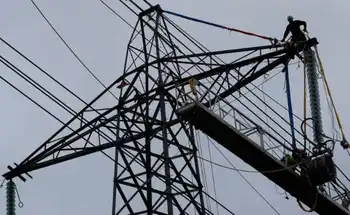Rate Cap Cost Over One Million In December
TORONTO -- - Capping hydro rates at 4.3 cents a kilowatt hour cost Ontario $110 million in December.
That's on top of the $335 million the province shelled out to provide electricity customers with $75 rebate cheques.
The payouts result from the decision by Premier Ernie Eves to freeze the price consumers and small businesses pay for the energy portion of the electricity bill at 4.3 cents a kilowatt hour.
But while those consumer prices are frozen, generators continue to receive market rates for the power they sell into Ontario's still-functioning wholesale power market.
The wholesale price averaged about 5.6 cents a kilowatt hour in December.
An exact figure hasn't yet been released.
The Independent Electricity Market Operator, which runs the wholesale market, said the gap between the low consumer price and the higher wholesale price totalled $110 million in December.
The gap is being covered by the Ontario Electricity Finance Corp. (OEFC), the company set up by the province to hold the debt left over from the old Ontario Hydro. The "stranded debt" held by the OEFC, not offset by any assets, was $20.1 billion as of March 31, 2002, up from $19.4 billion when the OEFC assumed the debt in 1999.
The price freeze for consumers and small businesses is retroactive to May 1, when Ontario opened its electricity market. The $75 rebate cheques were a first step.
Issuing those cheques cost $335 million.
Included in that total is the cost of adjusting the accounts of customers in cities such as Toronto, which had continued to bill consumers 4.3 cents a kilowatt hour after the market opened, planning to balance their accounts at year-end.
Related News

Ontario faces growing electricity supply gap, study finds
TORONTO - Ontario faces an electricity supply shortage and reliability risks in the next four to eight years and will not meet net-zero objectives without building new low-emission, nuclear generation starting as soon as possible, according to a report released yesterday by the Power Workers' Union (PWU). The capacity needed to fill the expected supply gap will be equivalent to doubling the province's planned nuclear fleet in eight years.
The planned closure of the Pickering nuclear power plant in 2025 and the increase in demand from electrification of the economy are the drivers behind a capacity gap in 2030 of at…




